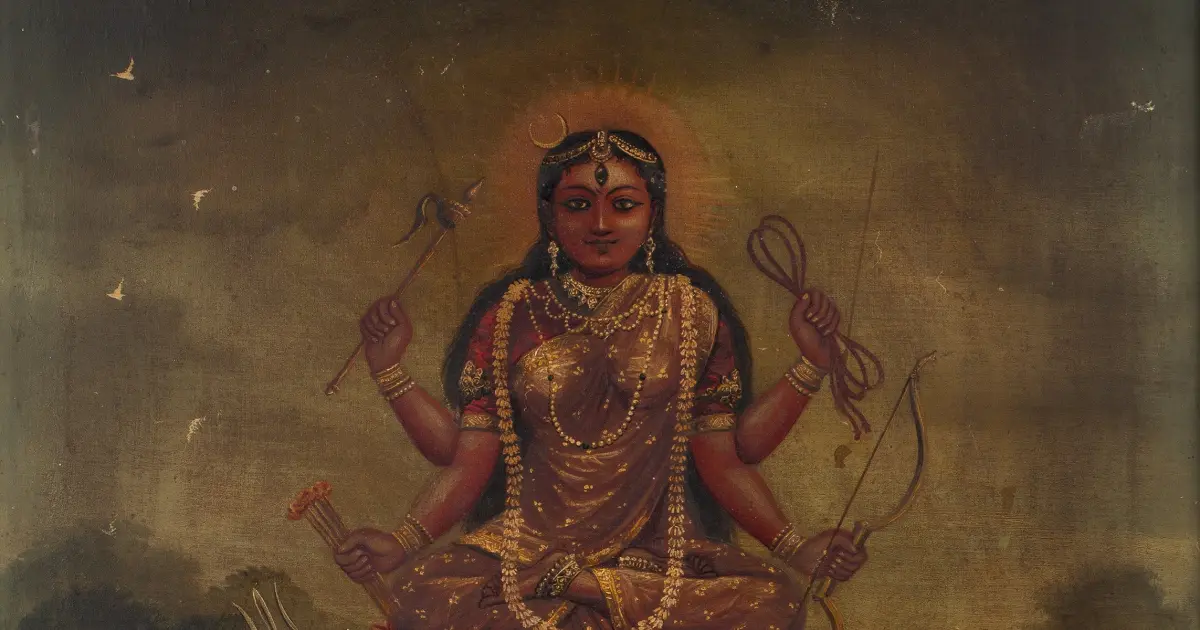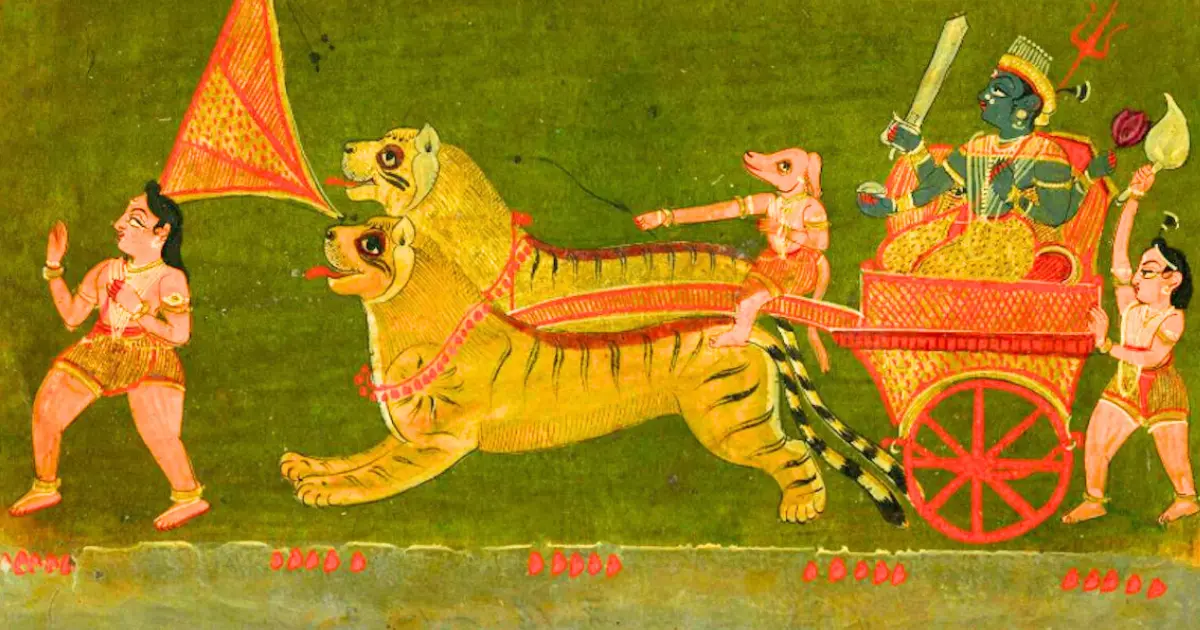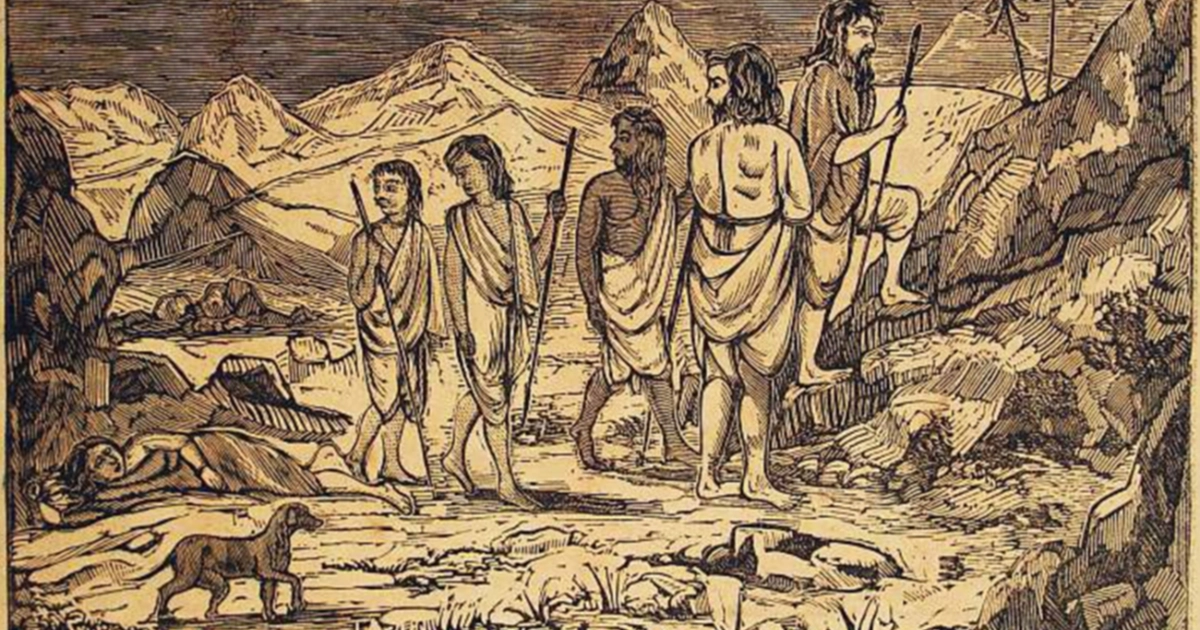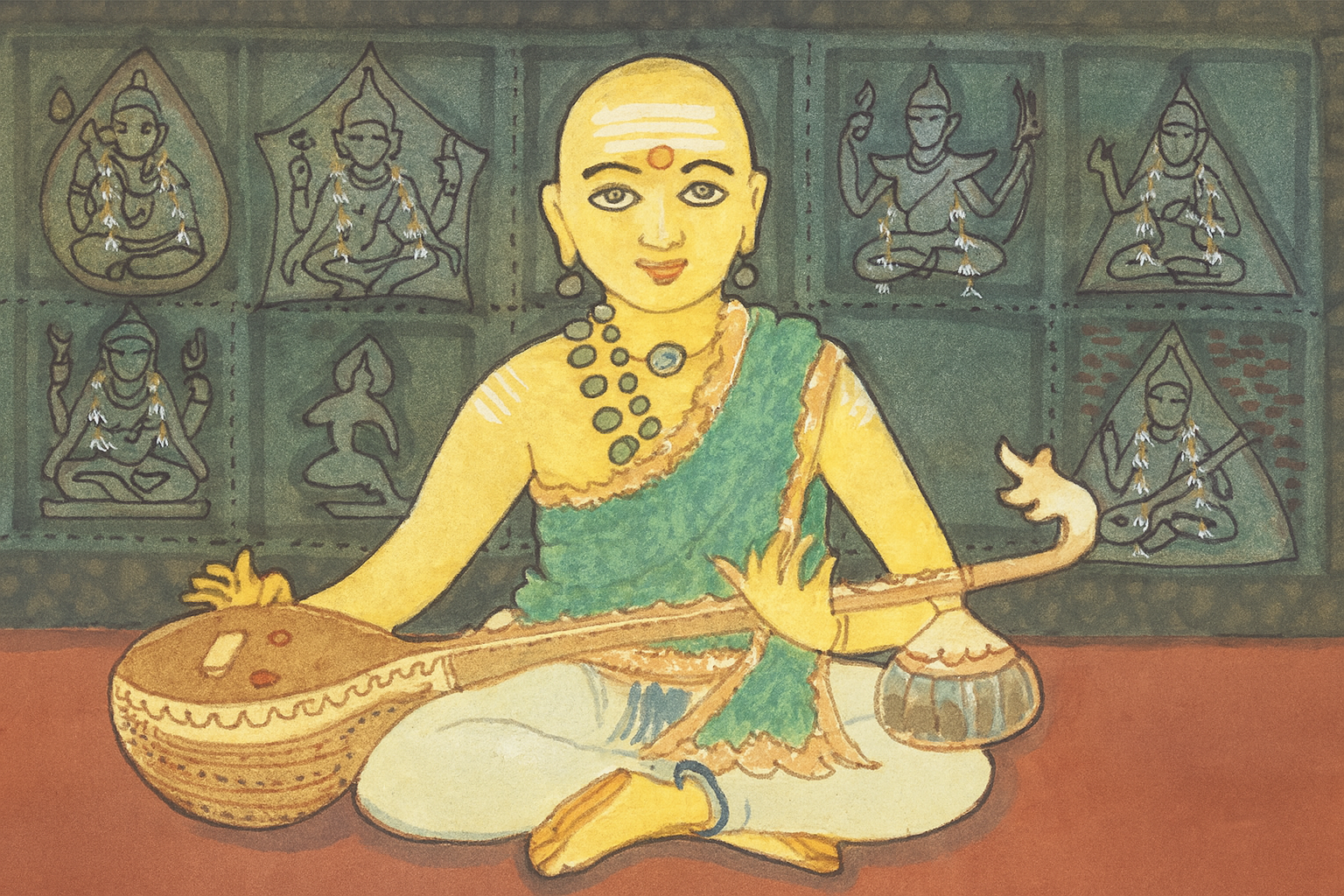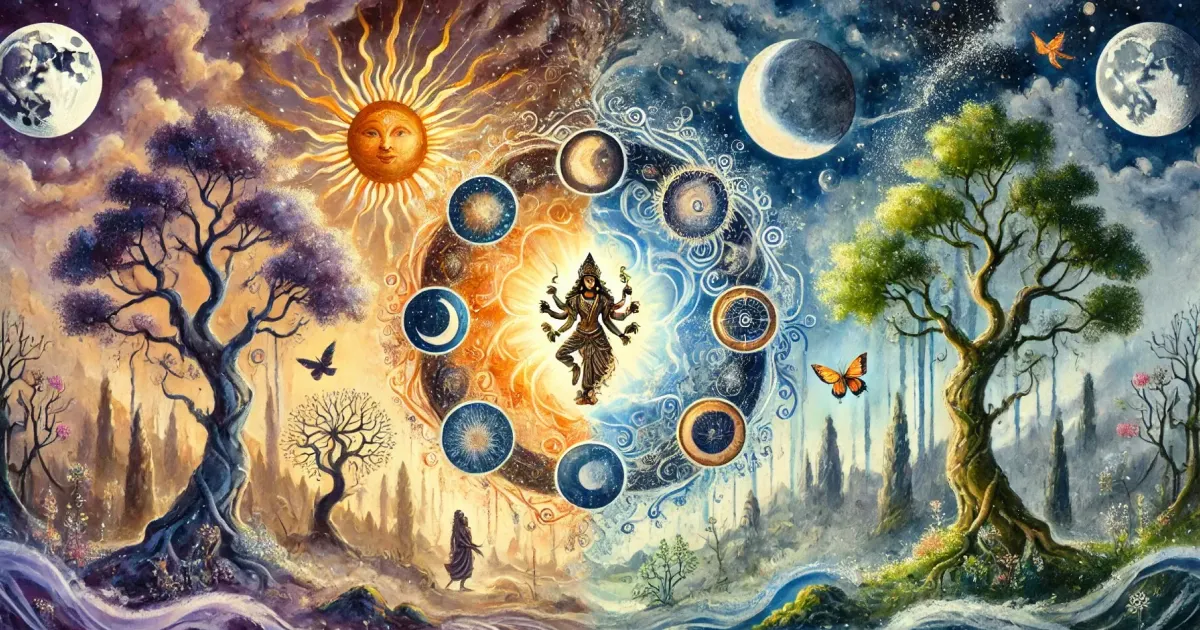Menstruation is a physiological process in a woman’s body that is not only key to her health and fertility but also her overall well-being. It is directly linked to psycho-social and religio-cultural aspects of a woman’s life. But this ordinary biological phenomenon has been the subject of intense symbolism and elaboration. The ideas and lore surrounding menstruation, the fecundity of women and childbirth that are disseminated by a civilization speak volumes about the worldview of the society and culture they emerge from.
The Hindu View
As with everything else, the Hindu view of menstruation is set against the backdrop of vast Hindu cosmology which emphasizes the cyclical and infinite nature of the universe — Āyurveda, Kāmaśāstra, Jyotiṣa śāstra, and other texts all relate menstruation with the phases of the moon. Called ārtava, from the root ṛta (cosmic order), which is related to ṛtu, which alludes to periodicity, such as that of seasons and lunar cycles. Specifically in the Śākta view, “a woman's ṛtudharma is said not only to interrelate and integrate the concepts of woman, female, and feminine but also to interrelate humans to their environment, and to the sociocultural reality in which their rites and rituals attain fruit.2”
Aśauca or Ritual Impurity
The smṛtis and dharmasūtras state that women enter a temporary period (three days) of aśauca or ritual impurity while menstruating, and once again become śauca or śuddha (pure) through a ritual bath. Aśauca denotes that they are restricted from performing any ritual action, one of the many states in which religious action is prohibited (such as after the death of a close family or soon after the birth of a child, etc.). The aśauca state of women is often equated to menstrual “pollution”, lopsidedly stressing the effects of menstruation on men — this overlooks women themselves as vulnerable to menstrual pollution, not only by the blood of other women but of their own as well.3
In contrast, the tāntrika view recognizes the menstrual process itself as śauca, in the belief that menstruating women harness immense energy and infinite creative/regenerative power; there are even tāntrika rituals that are specifically performed during menstruation. The regarding of the menstrual period as aśauca is not only linked to religious reasons, but also personal health and privacy. The smṛtis and dharmasūtras generally discourage a woman from partaking in strenuous activity, household work, and intercourse during their menstrual period. The discomfort and the physical weakness felt at the time of menstruation is recognized, due to which complete rest is imposed. Menstruation is regarded by women as a period for self-reflection, austerity and self-purification, and an opportunity for spiritual ascendency from which women emerge cleansed of any adharma which is discarded through menstrual blood.
Period of Rest
Women engage in practices that emphasize austerity and purification during their period, and are advised against performing their daily domestic duties and/or labor in order to rest. The seclusion of menstruous women in special shelters has been repeatedly singled out as indicative of social ostracization and relegation to a low status. However, the effect of menstrual huts in acting as sanctuaries for a woman seeking solitude and rest, and creating solidarity among women has been discounted. Moreover, such menstrual prescriptions are often voluntary, and there exists a defined means and acceptance for opting out depending on the circumstances. The accounts of isolation of women disregard the lived experience of women and are instead tainted by the dreaded ‘civilizing mission’ of colonialists, Christian missionaries, and in recent times, NGOs in putting an end to a primitive practice, a “social evil”.
The questions that must be asked are whether women themselves resent their seclusion, or do they enjoy it as a break from their normal labor? Such questions are rarely asked or answered in agenda-driven feminist reports and ethnographic literature, which take a closed-minded view loaded with preconceived notions.
The Celebration of Menarche
Hindus celebrate and perform specific rituals for each and every milestone — big or small — in an individual’s life, and menarche, or the onset of puberty is no exception. Local customs and ceremonies that celebrate the onset of menstruation are prevalent across India with many variations based on the regional culture.4 However, the ceremonies share the basic premise of being aimed at imparting a positive notion of menstruation to a young girl that has attained puberty. She is cherished as a manifestation of a Goddess as she transitions into womanhood, and the ceremony facilitates the acceptance of the changes associated with puberty and sexuality. It instilled a sense of confidence and joy in her feminine identity. She is treated with care, and presented with new clothes and gifts. The rituals are also a time for women of the household to impart knowledge and wisdom regarding the menstrual practices that must be followed.
Menstruating Goddesses: The Śākta View
Woman's own nature (strīsvabhāva) and woman's religion (strīdharma) are defined in terms of menstruation, and it is argued that menstruation, which is woman's own nature, can also be construed as woman's religion. Menstruation for Śāktas is therefore “not simply a biological fact and for that reason does not allow us to reify the reality of women's being into woman/female/feminine5.”. Menstruation is seen as desirable, associated with fertility and womanhood, and not perceived negatively and menstrual blood is symbolic of power and potency, the primordial śakti of the Goddess.
Goddesses associated with menstruation in Hinduism are Pārvatī, Lajjā Gaurī, Bhuvaneśvarī, Kāmākhyā, etc. Goddess Bhuvaneśvarī is considered the goddess of menstruation who is worshiped by the married couple prior to conceiving a child. Rajaparba in coastal Orissa and Ambubachi at the Kamakhya temple in Guwahati, Assam — a śaktipīṭha and where the Goddess Sati’s yoni resides are two examples of festivals of menstruation of the Earth/the Goddess. There is also mention of a menstrual festival at Kalighat in Kolkata. For Goddess Kāmākhyā in Assam, the śāktas celebrate the Ambubachi festival (ambubachi literally means menstruation, formed of the words ambu, which means water or rather, procreative water and vachi meaning to express or to blossom) for the three days that she is said to be menstruating. At Kamakhya, the main temple and surrounding Daśamahāvidya temples are all closed for three days, paralleling the time frame of menstrual practices of many Hindu women. During Ambubachi, the water that ordinarily flows over the Goddess Kāmākhyā’s yoni (the source of which is a natural underground spring) is said to run menstrual red just as the clay-red earth runs like menstrual flow with the power of the monsoon rains. Pieces of menstrual cloth, fruit, flowers, and small packets of sindur are offered to her. Farmers do not work on land for three days, believing that Mother Earth, through her monthly menstruation, loses her generative power and so needs reinvigoration through rest and absorbing liquids.
The Kṛṣi-Parāśara, a 8th/9th century text on agriculture also alludes to the menstruation of earth-goddess, recommending that a farmer must not sow seeds during the 3 days between the end of Jyeṣṭha and the Āṣāḍha as the earth is menstruating. Through this it is clear that menstruation is a sacred time and process, which is to be respected and rejoiced. The female body of women-earth Goddess must not be disturbed during her menstruation, or the consequence is chaos. In the festival, generation and regeneration cut across the human, the earthly and the cosmic planes, which is in contrast with the modernist reading of women’s generativity as a mere biological process.6
Read Part 2.
Footnotes and References
- Patel, Kartikeya C. “Women, Earth, and the Goddess: A Shākta-Hindu Interpretation of Embodied Religion.” Hypatia 9, no. 4 (1994): p. 69.
- Ibid
- Blood Magic: The Anthropology of Menstruation. United Kingdom: University of California Press, 1988. p. 11
- These practices are not elaborated here. Refer to Sridhar, Nithin. Menstruation Across Cultures for a brief overview of local customs and practices prevalent in a few states.
- Patel, Kartikeya C. “Women, Earth, and the Goddess: A Shākta-Hindu Interpretation of Embodied Religion.” Hypatia 9, no. 4 (1994): 73
- Apffel-Marglin, Frédérique, and Julia A. Jean. “Weaving the Body and the Cosmos: Two Menstrual Festivals in Northeastern India.” Worldviews, vol. 24, no. 3, 2020, pp. 247. JSTOR.
- Sridhar, Nithin. Menstruation Across Cultures: The Sabarimala Confusion, a Historical Perspective. United Kingdom: Global Collective Publishers, 2021.
